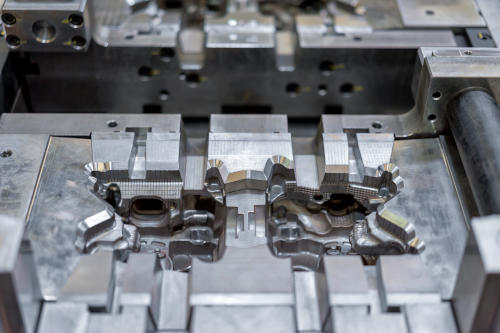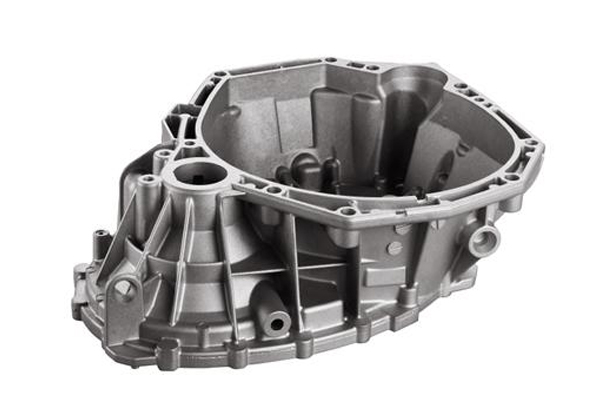Aluminum Casting safety guidelines for manufacturers and workers
Recognizing the Benefits and Varieties of Aluminum Castings in Industry
Aluminum castings have ended up being significantly crucial across numerous sectors because of their special properties and making versatility. Their light-weight and corrosion-resistant nature makes them ideal for demanding applications. Different spreading techniques permit for specific and complex styles. As industries develop, understanding the range of light weight aluminum casting choices and their benefits is vital. This exploration raises inquiries regarding their future duty in manufacturing and sustainability. What lies in advance for light weight aluminum in these markets?
The Essentials of Aluminum Casting Processes
Aluminum casting processes differ in method, they all share an usual objective: to transform molten light weight aluminum right into specific forms and components. The main methods of aluminum casting consist of sand spreading, die spreading, and investment casting. In sand casting, molds are created utilizing sand, permitting complex designs however often causing a harsh surface coating. Die casting uses high-pressure injection of liquified aluminum right into steel molds, producing high precision and smooth surface areas, suitable for mass manufacturing. Investment spreading, or lost-wax casting, entails creating a wax pattern covered with a ceramic shell, offering outstanding detail and dimensional precision. Each method has its specific applications and considerations, including cost, production volume, and complexity of the shapes produced. Understanding these basic techniques is crucial for markets that depend on light weight aluminum castings to fulfill their design and practical requirements.
Trick Benefits of Utilizing Aluminum Castings
Aluminum castings provide numerous advantages that make them a recommended option in various industries. One of the vital advantages is their lightweight nature, which enables much easier handling and decreased delivery expenses. This characteristic adds to boosted power effectiveness, especially in automotive and aerospace applications. Additionally, aluminum exhibits outstanding corrosion resistance, prolonging the life expectancy of elements and lessening maintenance requirements.
One more benefit is the versatility of light weight aluminum castings, which can be built right into complex shapes, enabling ingenious designs that conventional materials may not suit. The thermal and electric conductivity of aluminum likewise makes it optimal for applications requiring warmth dissipation or effective electrical connections. Aluminum castings are recyclable, aligning with sustainability goals and decreasing environmental effect. Overall, the mix of stamina, longevity, and adaptability makes light weight aluminum castings an important part in modern-day production methods across numerous sectors.
Common Kinds Of Aluminum Castings
Aluminum castings are generated via different techniques, each suited for different applications and demands. Amongst the most usual methods are sand spreading, which provides flexibility and cost-effectiveness, and die spreading, known for its precision and performance. Comprehending these procedures is essential for picking the appropriate spreading technique for specific commercial needs.
Sand Casting Process
A significant section of aluminum castings in market is created through the sand spreading process, which is renowned for its flexibility and cost-effectiveness. This technique includes creating a mold and mildew from a sand mix, permitting the manufacturing of complicated forms and huge parts. Sand casting is especially helpful for small to medium-sized production runs, as it needs minimal preliminary financial investment in tooling. The procedure starts with pattern making, adhered to by mold preparation, putting molten aluminum, and ultimately, cooling down and completing. The high thermal conductivity of aluminum warranties even cooling, reducing the danger of flaws. Sand casting stays a recommended choice for producers seeking efficiency and adaptability in their light weight aluminum spreading applications.
Die Casting Techniques
Die casting techniques represent a very effective technique for creating light weight aluminum castings, specifically fit for high-volume manufacturing. These methods largely consist of 2 typical kinds: warm chamber and chilly chamber pass away casting. In warm chamber die spreading, the liquified aluminum is injected into the mold from a tank that is heated, making it excellent for low-melting-point alloys. On the other hand, chilly chamber die casting involves putting the molten light weight aluminum right into a separate chamber before shot, which suits higher melting-point products. Both methods supply precision in shaping complicated geometries and accomplishing superb surface coatings. In addition, pass away spreading is known for its rapid cycle times, decreasing production costs while preserving consistency in high quality throughout large amounts of components.
Applications in the Automotive Industry
Transforming lorry design and performance, aluminum castings play an essential function in the vehicle market. These castings contribute considerably to weight reduction, boosting gas performance and overall lorry dynamics. Key applications consist of engine blocks, transmission housings, and suspension parts, where their light-weight nature and toughness are essential.
Aluminum castings likewise enable complex geometries, making it possible for suppliers to produce elaborate styles that maximize air movement and reduce drag. This ability is particularly helpful in electric and hybrid lorries, where performance and efficiency are vital.
Furthermore, the deterioration resistance of light weight aluminum extends the life-span of automobile components, minimizing upkeep expenses and boosting automobile dependability. The convenience of light weight aluminum castings supports both automation and personalized applications, making them a favored selection amongst vehicle engineers and designers. Aluminum Casting. As the market continues to innovate, aluminum castings will stay an essential aspect in the search of advanced auto modern technologies
Aerospace Sector Usage
In the aerospace industry, aluminum castings are integral to the style and capability of airplane parts. These castings are used in various applications, including engine parts, structural components, and indoor installations. Their light-weight nature contributes to enhanced fuel performance and total performance, which is necessary in aerospace engineering.
Aluminum castings additionally use excellent strength-to-weight proportions, permitting manufacturers to produce complex layouts without jeopardizing structural honesty. The capability to generate intricate geometries makes read this article aluminum casting a favored choice for components that call for precision and dependability.
Furthermore, light weight aluminum's resistance to deterioration enhances see this here the longevity of aerospace parts, minimizing upkeep expenses and improving safety (Aluminum Casting). The casting procedure permits high-volume production, meeting the industry's needs for performance. Overall, aluminum castings play an essential duty ahead of time aerospace modern technology and optimizing aircraft layout, contributing to the market's continuous technologies

Benefits Over Various Other Materials
Aluminum castings provide significant benefits over other products, making them a preferred option in numerous industries. One of the key advantages is their light-weight nature, which adds to lowered power usage and improved efficiency in applications such as automotive and aerospace. Furthermore, light weight aluminum shows excellent deterioration resistance, permitting long term durability and minimized upkeep expenses.
The product's superior thermal and electric conductivity further boosts its appeal, particularly in applications requiring warmth dissipation or reliable energy transfer. Aluminum Casting. Aluminum castings also give superb dimensional security, ensuring precise tolerances and lowering the probability of problems throughout the production process
The adaptability of aluminum enables for complex shapes and detailed styles, which can be achieved with numerous casting techniques. This flexibility makes light weight aluminum a useful choice for suppliers intending to introduce while preserving cost-effectiveness and top quality. To end, aluminum castings stand apart as a result of their special combination of homes that provide to varied industrial requirements.
Future Trends in Aluminum Casting Innovation
Future patterns in light weight aluminum casting innovation are increasingly concentrated on automation and the development of advanced alloys. Automation stands to boost performance and accuracy in casting procedures, decreasing labor prices and improving product consistency. Concurrently, developments in alloy formulations assure to expand the series of applications for aluminum castings, resolving certain efficiency requirements in different markets.
Automation in Casting Processes

Advanced Alloys Advancement
With the continuous advancement of product scientific research, the advancement of advanced alloys is established to change light weight aluminum casting innovation significantly. These cutting-edge alloys are made to enhance mechanical properties, corrosion resistance, and thermal security, providing to diverse commercial applications. Scientists are concentrating on crossbreed alloys that integrate aspects such as magnesium, silicon, and zinc to achieve peak efficiency. Furthermore, innovations in computational modeling and simulation are allowing the forecast of alloy habits under various conditions, enhancing the layout process. The integration of recycling modern technologies is likewise coming to be vital, enabling makers to generate high-performance aluminum castings while decreasing environmental effect. As these patterns proceed, the aluminum spreading market is most likely to witness substantial renovations in efficiency, sustainability, and product top quality.
Frequently Asked Concerns
Just How Is Aluminum Casting Eco Friendly?
The question of light weight aluminum casting's environmental friendliness occurs from its recyclability and lower energy intake compared to various other steels. Furthermore, improvements in lasting methods further boost its green track record within producing procedures.
What Is the Normal Life Expectancy of Aluminum Castings?
The typical life-span of light weight aluminum castings varies based upon application and setting, usually varying from numerous years to decades. Variables such as direct exposure to corrosive aspects and mechanical tension can greatly influence their durability and durability.
Can Aluminum Castings Be Reused?
Aluminum castings can certainly be recycled. This process significantly decreases waste and preserves sources, permitting suppliers to reuse products effectively. Recycling aluminum castings contributes to sustainability and reduces the ecological impact connected with light weight aluminum manufacturing.
What Are the Usual Problems in Aluminum Castings?
Typical issues in light weight aluminum castings include porosity, shrinking, imbalance, and surface area blemishes. These problems can emerge from poor putting techniques, inappropriate alloy composition, or inadequate air conditioning, eventually affecting the top quality and performance of the last item.
Just how Do I Pick the Right Aluminum Casting Process?
Picking the best light weight aluminum casting process requires reviewing manufacturing volume, part intricacy, and preferred residential properties. Factors such as price, preparation, and material attributes also influence the decision, guaranteeing ideal results for particular applications.